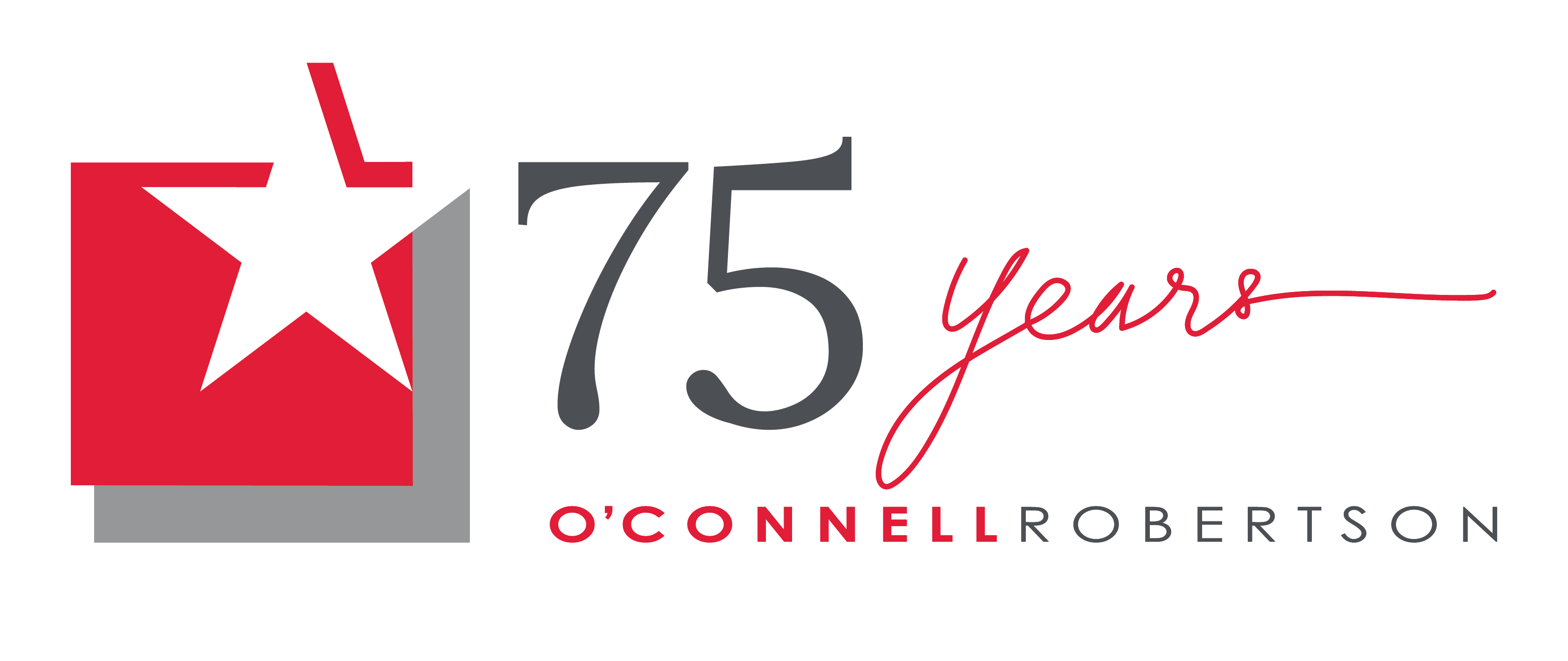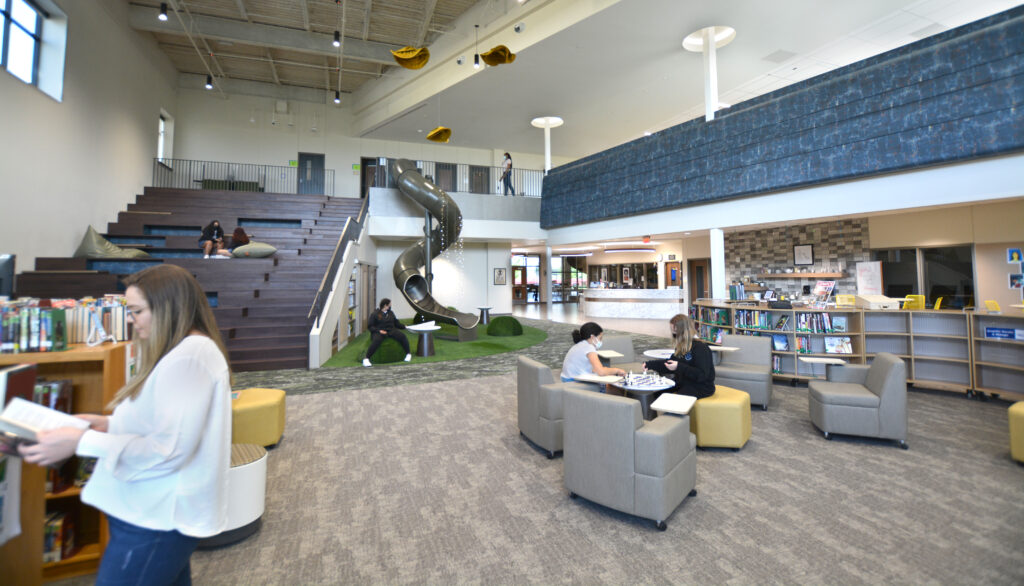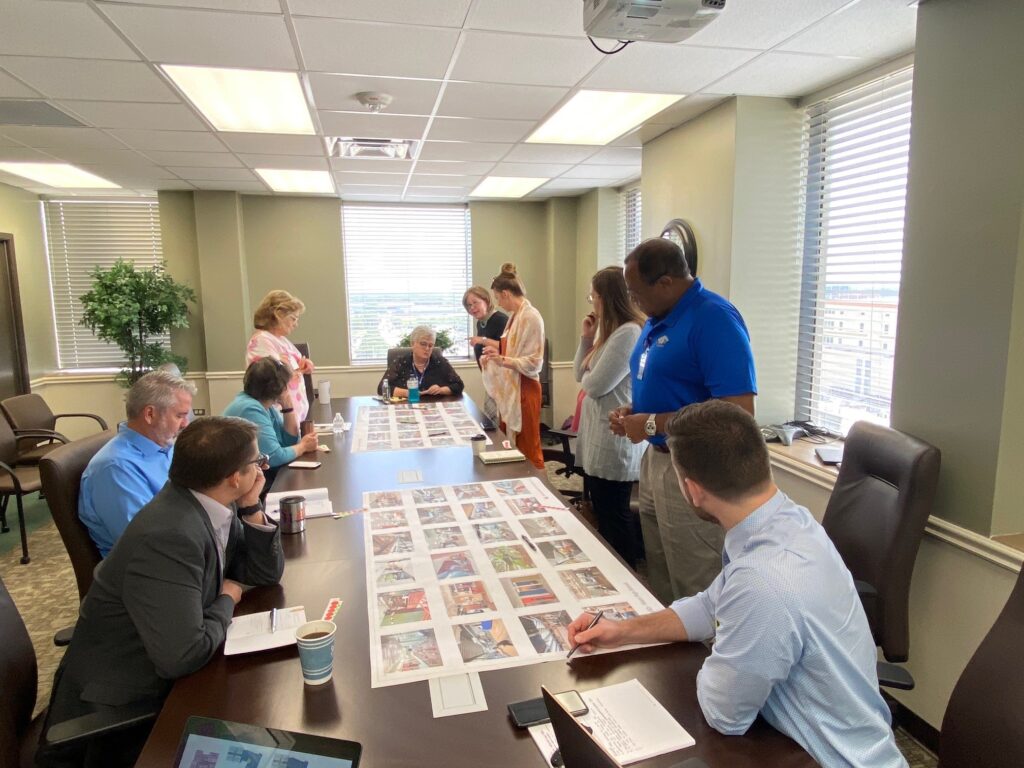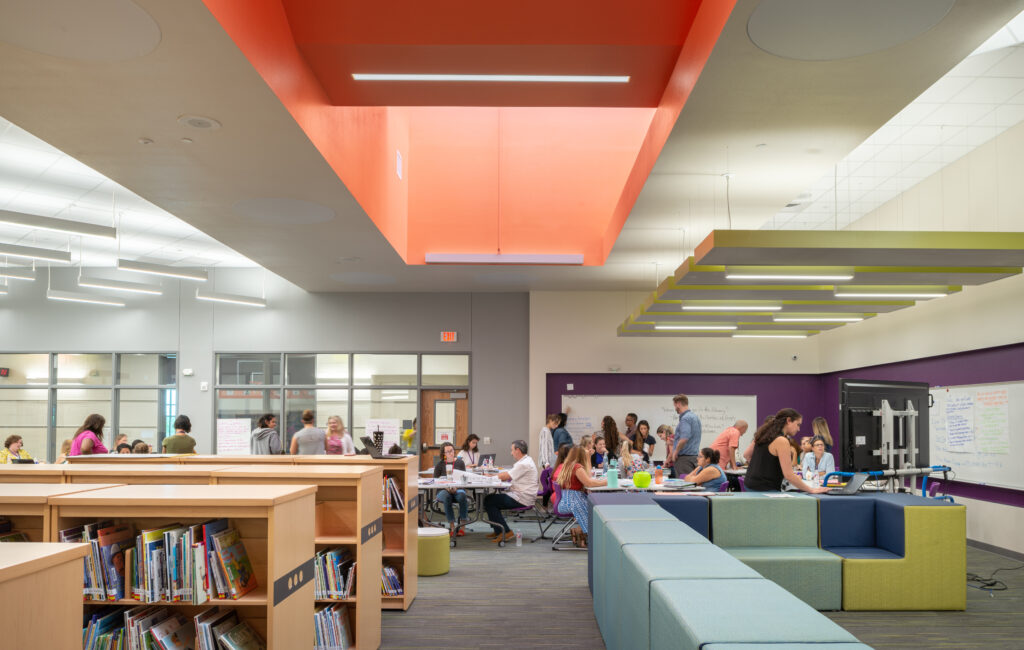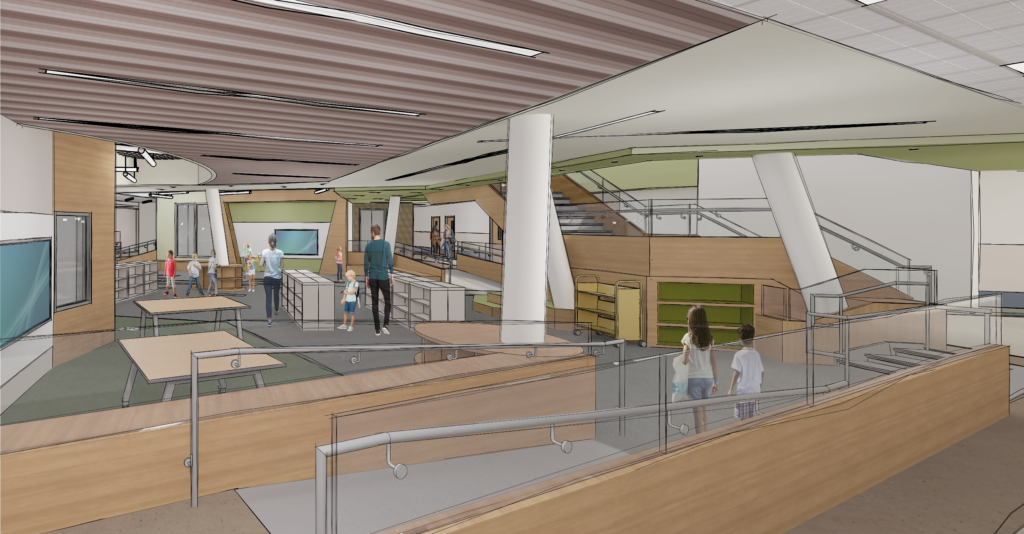Six Steps to Designing Your Dream Library

Six Steps to Designing Your Dream Library
By: Jayna Duke, Associate Principal at O’Connell Robertson
Libraries have radically changed over the last couple decades. Although these spaces look and sound very different from the library of a 1980s film, their purpose remains unchanged. Libraries are spaces to gather and share knowledge and resources. The way we access knowledge and resources has greatly changed and libraries must adapt to match.
So how do we adjust facilities that were built during the era of printed encyclopedias, or plan for a new library that needs to serve the generation that accesses the world via Augmented Reality and travels to space? Here are a few steps your team can take to create a library that will serve your population for years to come.
1. Involve Your Population
Libraries serve a broad and diverse audience. Take an elementary school for example. The same library serves children who are learning their letters, kids who have developed a passion for reading, students bringing learning to life in hands-on activities, and the parents and staff attending meetings to sharpen their skills after-hours. It is important to understand how each of these populations uniquely utilize the library.
One of the best ways to understand the diverse needs of library users is to develop a team of thought leaders that represents each user group. O’Connell Robertson did this with the Ann Richards School for Young Women Leaders. We involved students, teachers, and community members in the design process to give input on the library and the campus master plan as a whole. This resulted in a robust library capable of hosting a diverse range of functions while maintaining a distinct identity as a learning center.
The library at the Ann Richards School for Young Women is a robust learning destination that encourages fun and quiet, group and solo activities through different zones.
2. Define Your Purpose
What is the driving purpose of your library? When or why do you want students going to the library? Why have one at all?
It is important to develop a mission for your library that will be your source of truth for making decisions along the way. The more specific, the better. Imagine these two different libraries:
- Mission 1: I want students to go to the library to discover the world around them. Many of our students have never been exposed to the world beyond their street. I want the library to expand their vision of what is possible and how they can be a part of that.
- Mission 2: I want the library to be the hub that ties the rest of campus together. Math merges with science and English blends with social studies. The library is the central source for knowledge and the physical place where these disciplines come together and students see how the puzzle fits together.
The mission of either of these libraries informs choices that could result in dramatically different design criteria. Without the documented mission, it would be more difficult to ensure a holistic design that meets the intent for engagement within the space.
3. Identify Your Activities
Once the population and purpose are understood, begin to brainstorm all of the activities you can imagine taking place in the library.
We lead clients through a variety of exercises to dive deep into the MANY activities that happen in the library from week to week. It is important to understand who is involved, what resources they are utilizing, how often the activity ideally occurs, and other set-up, breakdown, and security items that are associated.
The logistics of the most frequent activities, or the most challenging to implement should be documented and addressed within the design.
O’Connell Robertson engages Waco ISD stakeholders in a design dialogue around their elementary school libraries.
4. Determine Your Priorities
Your mission drives your priorities. It will be necessary to balance wants with needs. In the end if something has to give, determine which option best supports the mission.
The library may be a convenient place for a monthly staff meeting because the chairs are more comfortable and it provides more room. However, if the adult tables and chairs steal the floor space at the cost of activities that are important to the mission of the library, it may serve the campus well to move the staff meeting to another location (the cafeteria, for instance).
5. Design the Space
Translating these diverse activities and lofty missions into physical space is key. Libraries are not the same one day to the next, and often not one hour to the next. The physical space has to be flexible enough to keep up with the demands.
You will likely also notice that your activities encompass a broad range of scenarios. From active group time researching, testing, and debating theories to quiet moments when a student can get lost in a novel, or tool dependent activities that require specific fixed resources.
This equates to variety. The library should be flexible and adjustable on a whim, but also provide areas designed to support truly different activities. Soft lounge areas that are cozy (smaller volumes and quieter) as well as group work areas where students feel encouraged to discuss ideas, build mock-ups, or explore in virtual reality together (open and bright).
The Del Valle Newton Collins Elementary School was designed to maximize flexibility while creating unique settings by zone (large and small spaces, louder and quieter zones).
For example, O’Connell Robertson recently designed two different libraries for Comal ISD that include the same program elements. But the pieces can be arranged in vastly different configurations that result in two spaces that look almost nothing alike, even though they are based on the same components.
Comal ISD’s upcoming elementary school library projects include movable furniture that can be reconfigured easily for lots of flexibility.
6. Revisit Regularly
You don’t need to entirely renovate your library every year. That would be unreasonable. But we do recommend you do this deep dive exercise every 3-5 years to evaluate how you can adapt the elements that you already have to match the changing needs of the space.
There may be a large computer station in your library that is no longer utilized. Tables and bookcases could be rearranged to offer a great “Making Area” with simple tools of tape, paper, and magazines. This would set the tone that “making” is encouraged and an important part of learning in the library.
Again, keep your plans rooted in your goals for the space, determine the activities that support your mission and get creative with your design team to develop spaces that foster the styles of learning you want to encourage.
There is no such thing as one ideal library design. Your library needs to serve your population, priorities and mission. That’s why it’s important that your design team lead you through this journey. At O’Connell Robertson, we employ this process on every project as part of our mission-driven approach. We make your mission our goal and work with you to design a library to serve your community for years to come.
